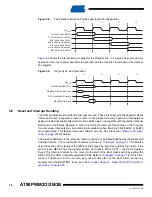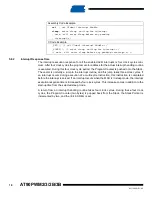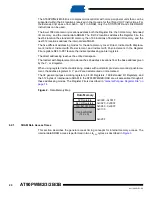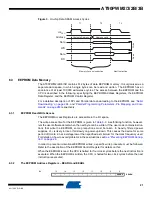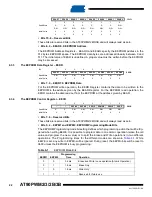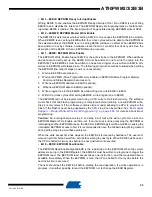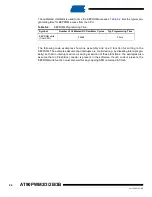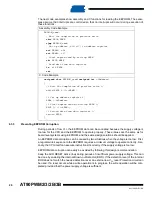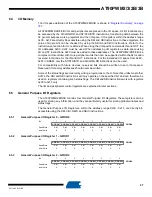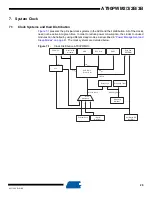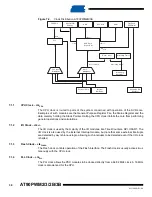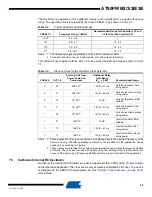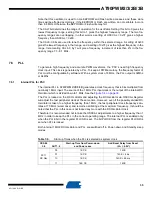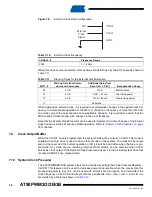
30
4317I–AVR–01/08
AT90PWM2/3/2B/3B
Figure 7-2.
Clock Distribution AT90PWM2B/3B
7.1.1
CPU Clock – clk
CPU
The CPU clock is routed to parts of the system concerned with operation of the AVR core.
Examples of such modules are the General Purpose Register File, the Status Register and the
data memory holding the Stack Pointer. Halting the CPU clock inhibits the core from performing
general operations and calculations.
7.1.2
I/O Clock – clk
I/O
The I/O clock is used by the majority of the I/O modules, like Timer/Counters, SPI, USART. The
I/O clock is also used by the External Interrupt module, but note that some external interrupts
are detected by asynchronous logic, allowing such interrupts to be detected even if the I/O clock
is halted.
7.1.3
Flash Clock – clk
FLASH
The Flash clock controls operation of the Flash interface. The Flash clock is usually active simul-
taneously with the CPU clock.
7.1.4
PLL Clock – clk
PLL
The PLL clock allows the PSC modules to be clocked directly from a 64/32 MHz clock. A 16 MHz
clock is also derived for the CPU.
General I/O
Modules
ADC
CPU Core
RAM
clk
I/O
AVR Clock
Control Unit
clk
CPU
Flash and
EEPROM
clk
FLASH
clk
ADC
Source Clock
Watchdog Timer
Watchdog
Oscillator
Reset Logic
Clock
Multiplexer
Watchdog Clock
Calibrated RC
Oscillator
(Crystal
Oscillator)
External Clock
PSC0/1/2
PLL
CLK
PLL
Multiplexer
PLL Input

